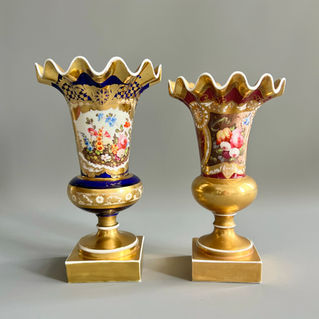

Into the deep
A few weeks ago I wrote about the fashion for deep a maroon colour, and today I have some more items in this style. You may wonder: why were these deep colours so popular all of a sudden? They seemed to be everywhere from the 1820s onwards! The answer is simple. Once technology developed and porcelain manufacturers were able to control the temperature in their kilns with more precision, it became possible to easily produce porcelain with wonderful under- or overglaze deep co


Teatime!
The newly unpacked items of the Murray Pollinger Collection are proving to be very popular... this Saturday, it's teatime, Teapots have...


For the lovers of maroon
Last week's post on the colour puce was popular (as were the pieces offered), so this week I was struck by how many beautiful maroon...


The flea immortalised
A teacup and a flea can have more in common than one might think... let me explain myself. From hand painted flowers and landscapes, we are moving on to puce-printed patterns; puce is a colour that was popular both in the 18th and the 19th Century. The colour "puce" derives its name from the French word for "flea", and it became fashionable in the 18th Century. Apparently, Marie Antoinette loved puce coloured garments, and it became a feature in Parisian fashion. Before long,



































